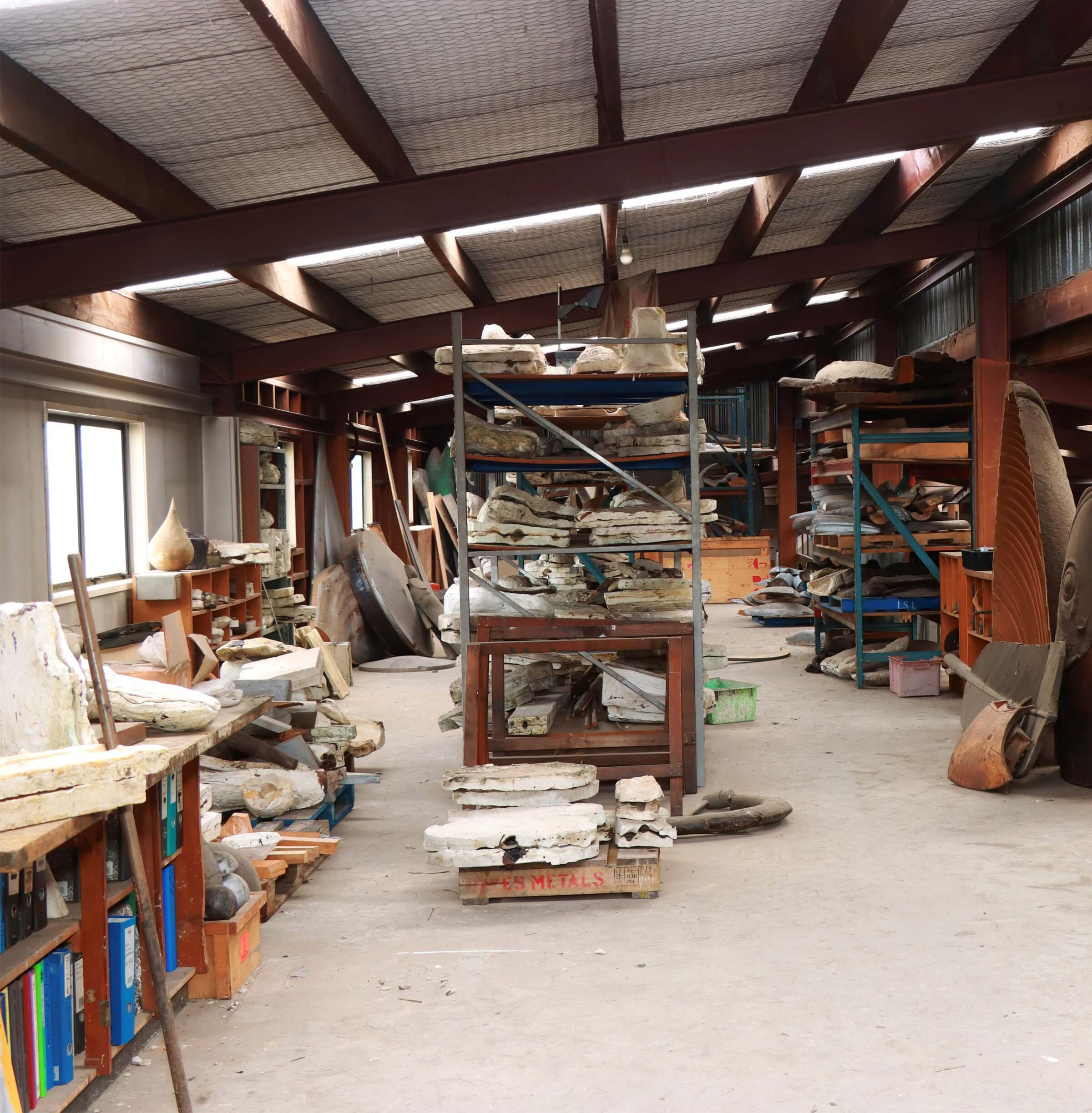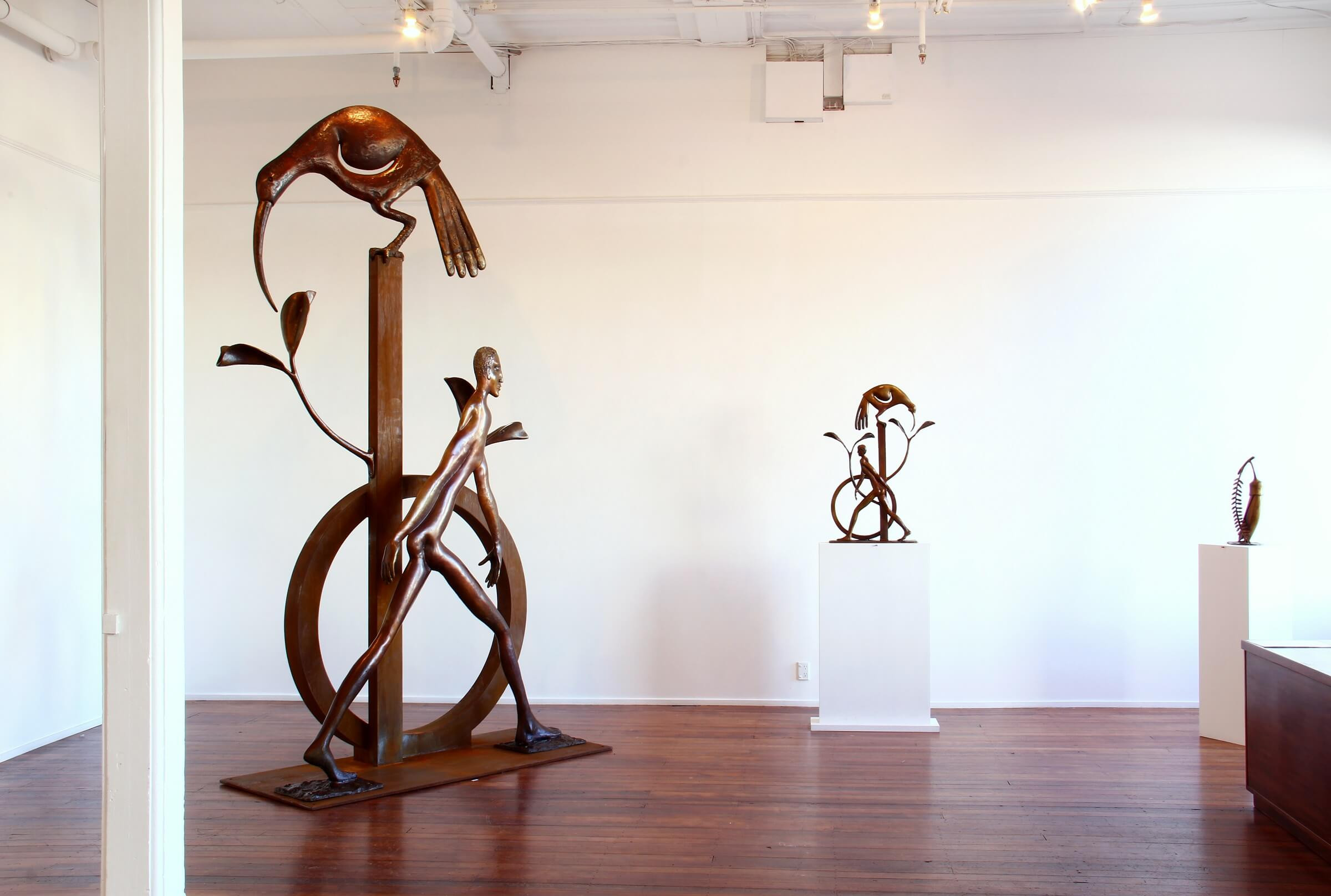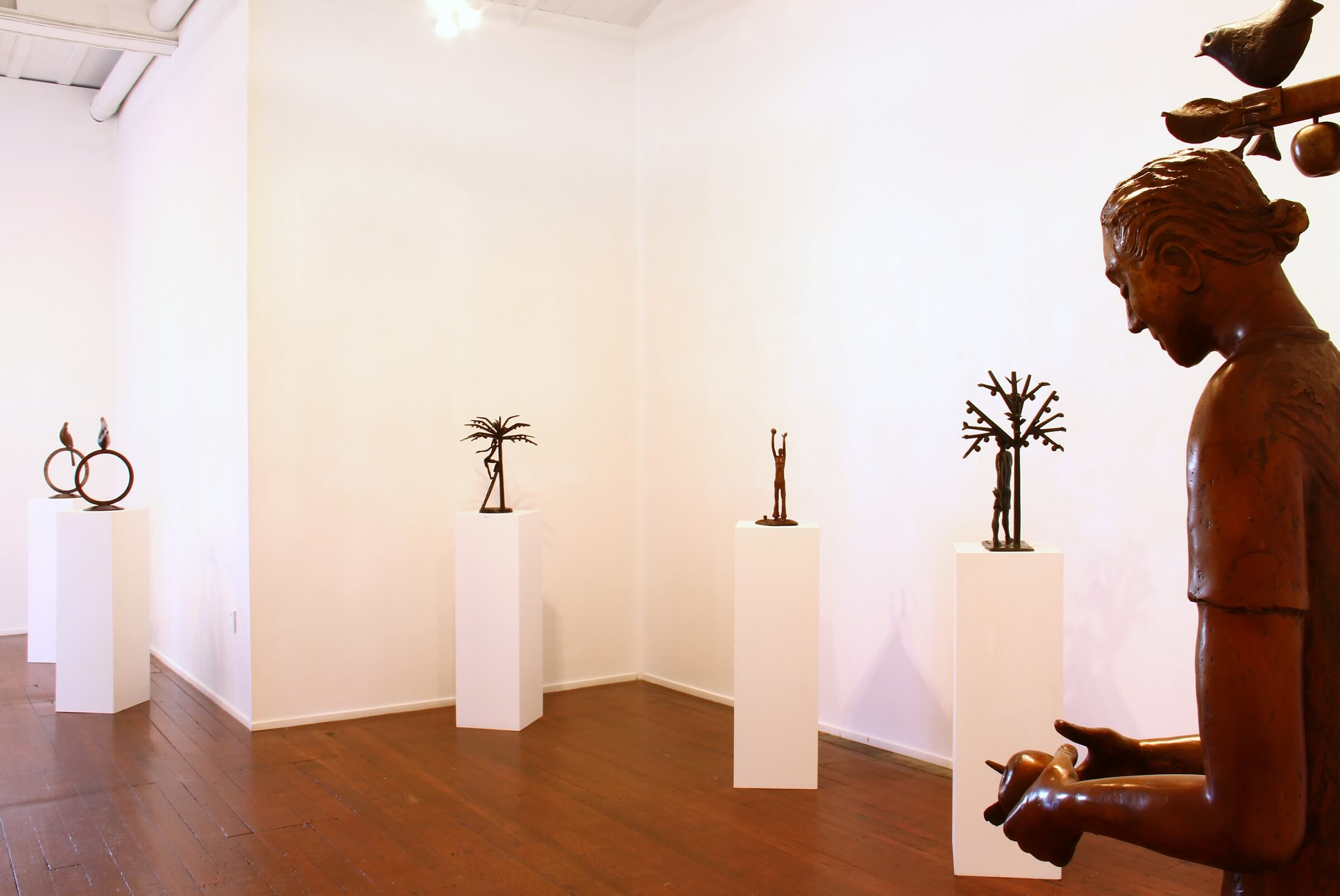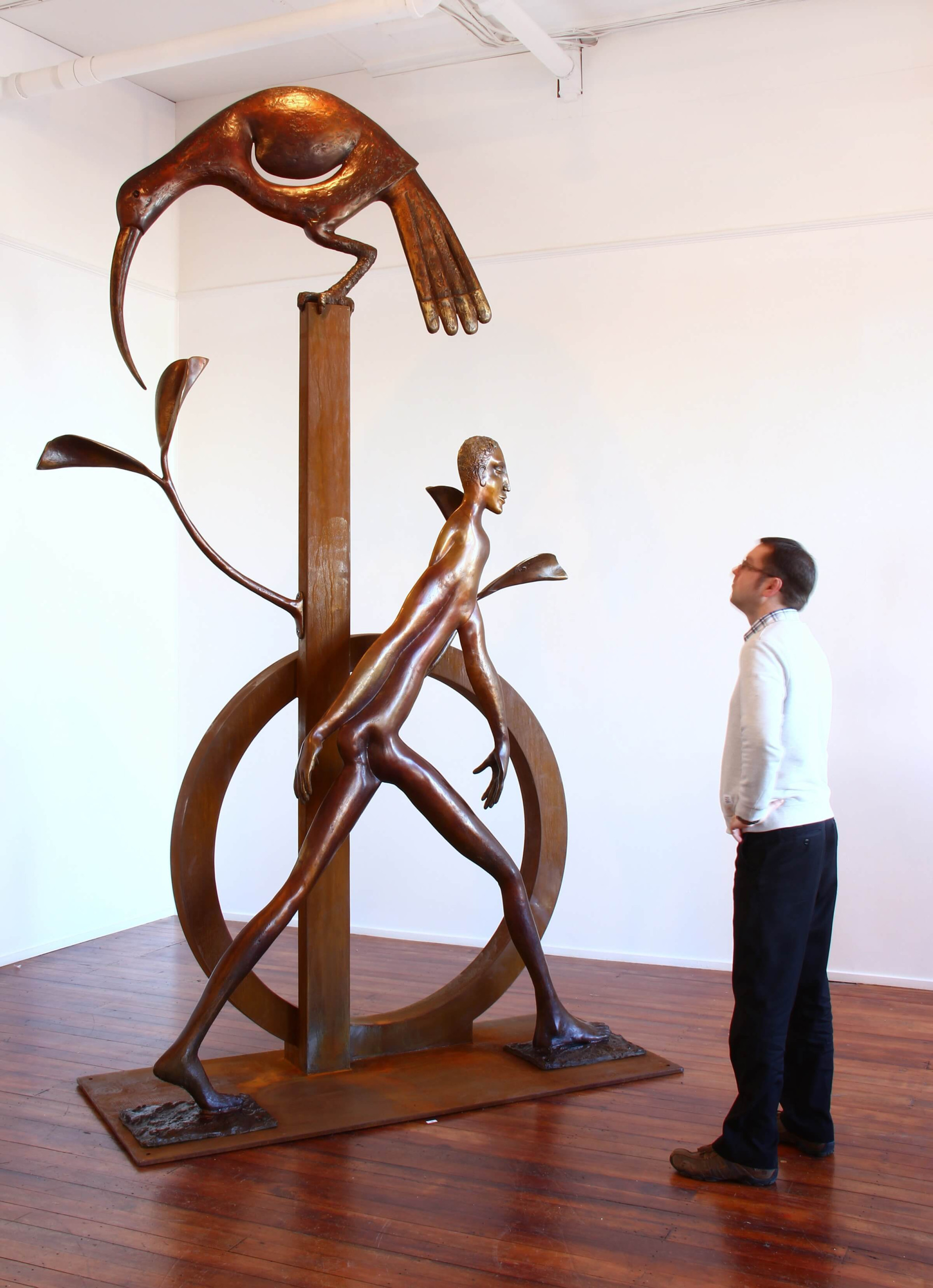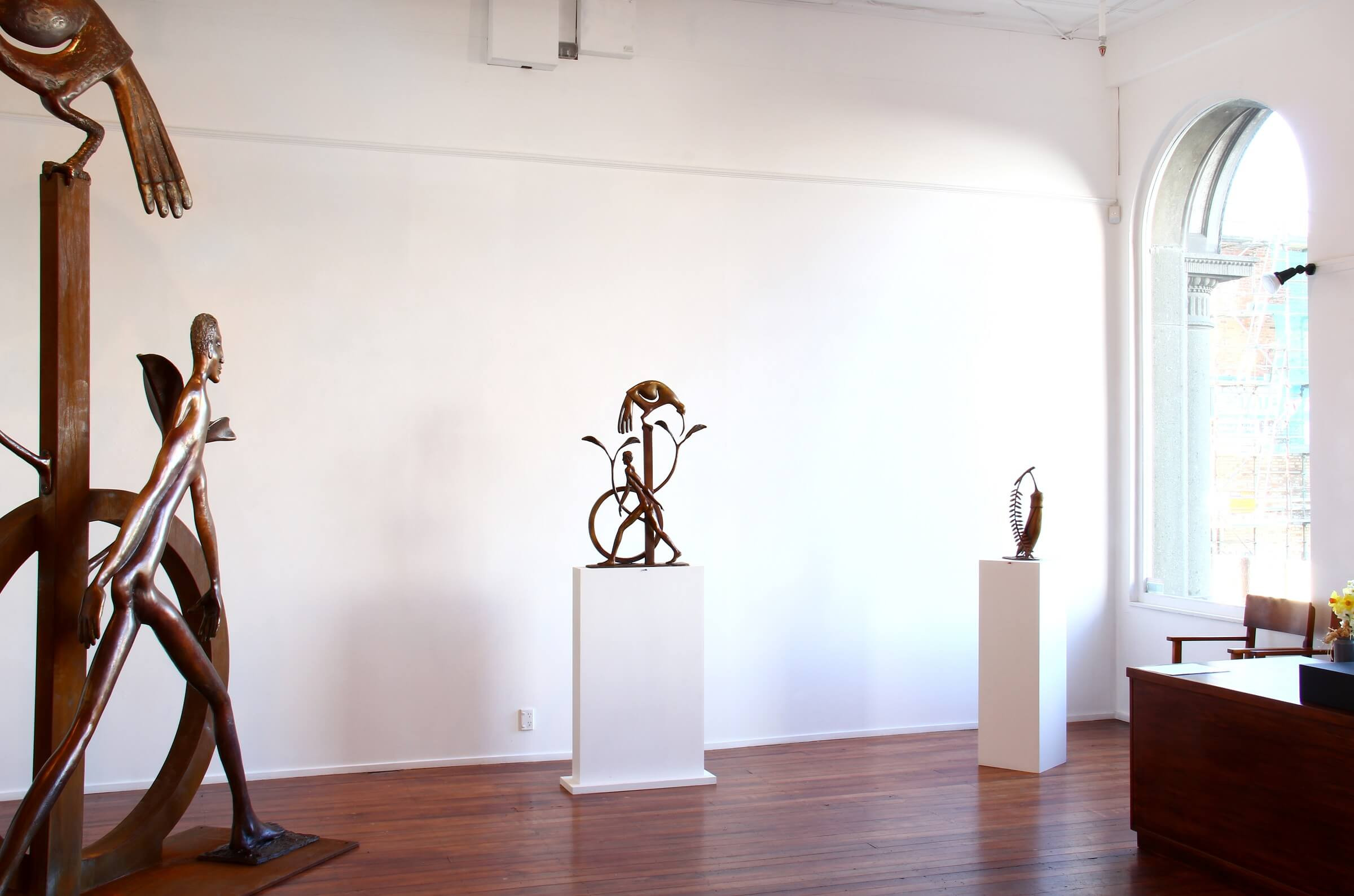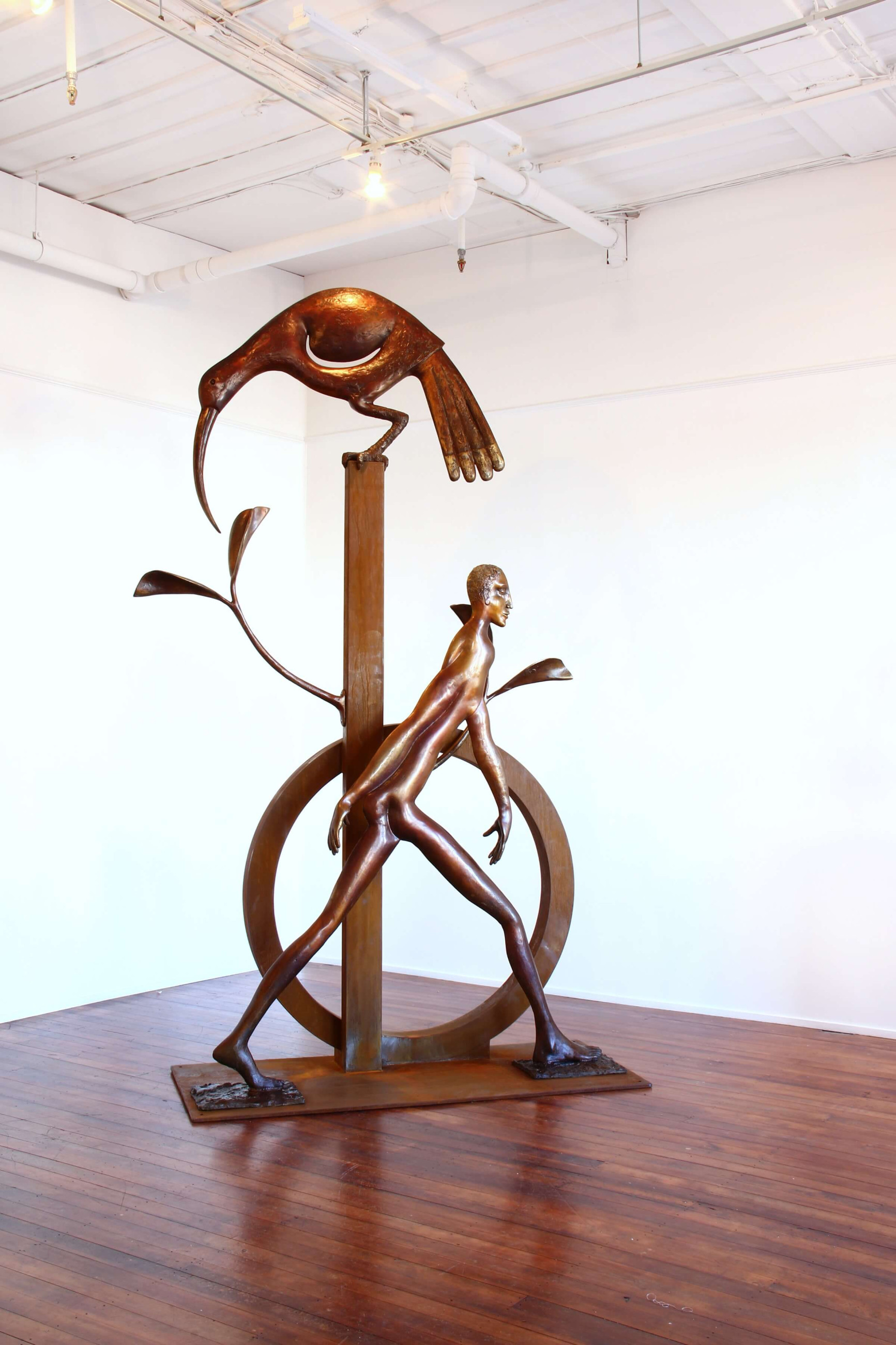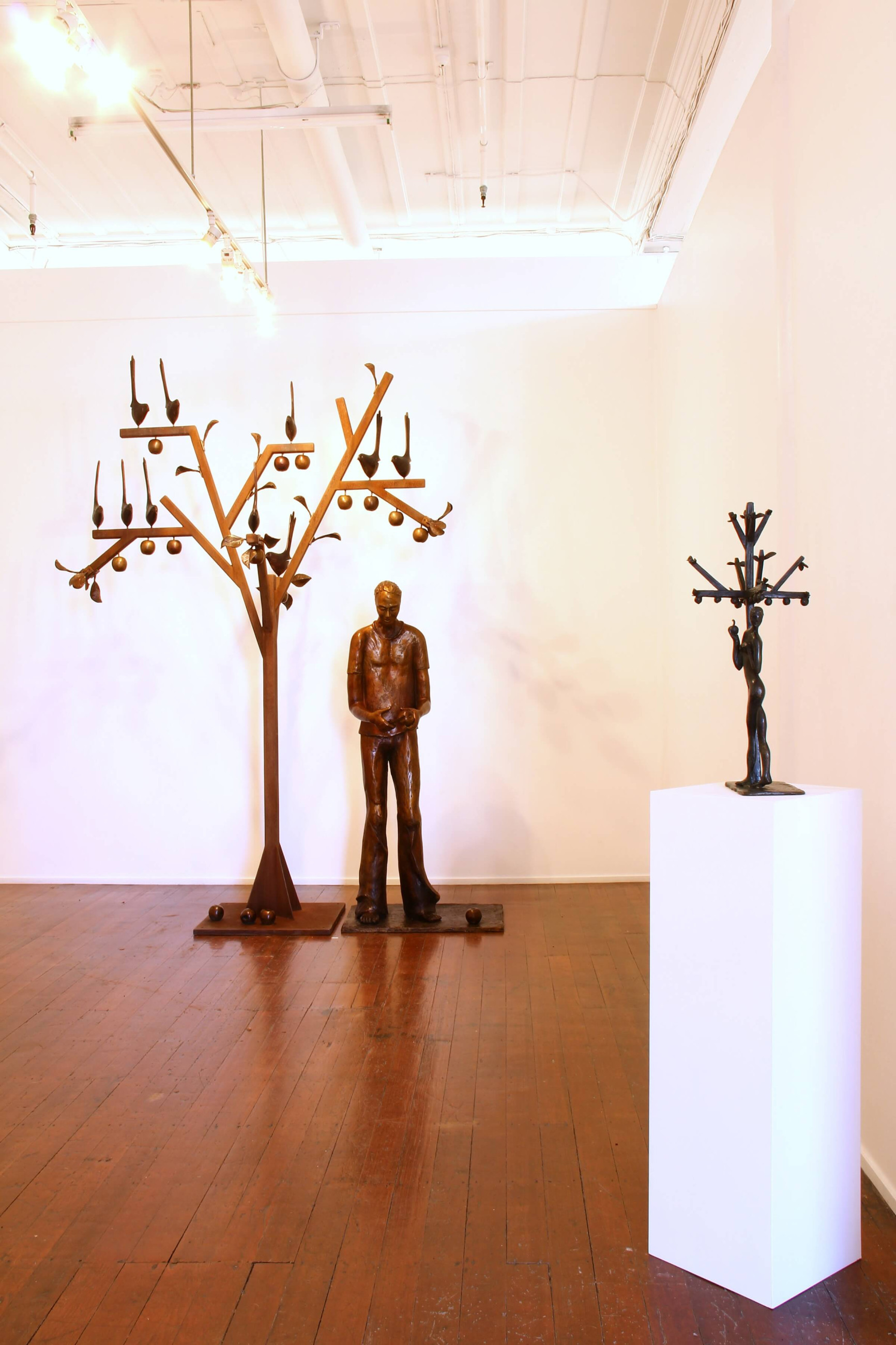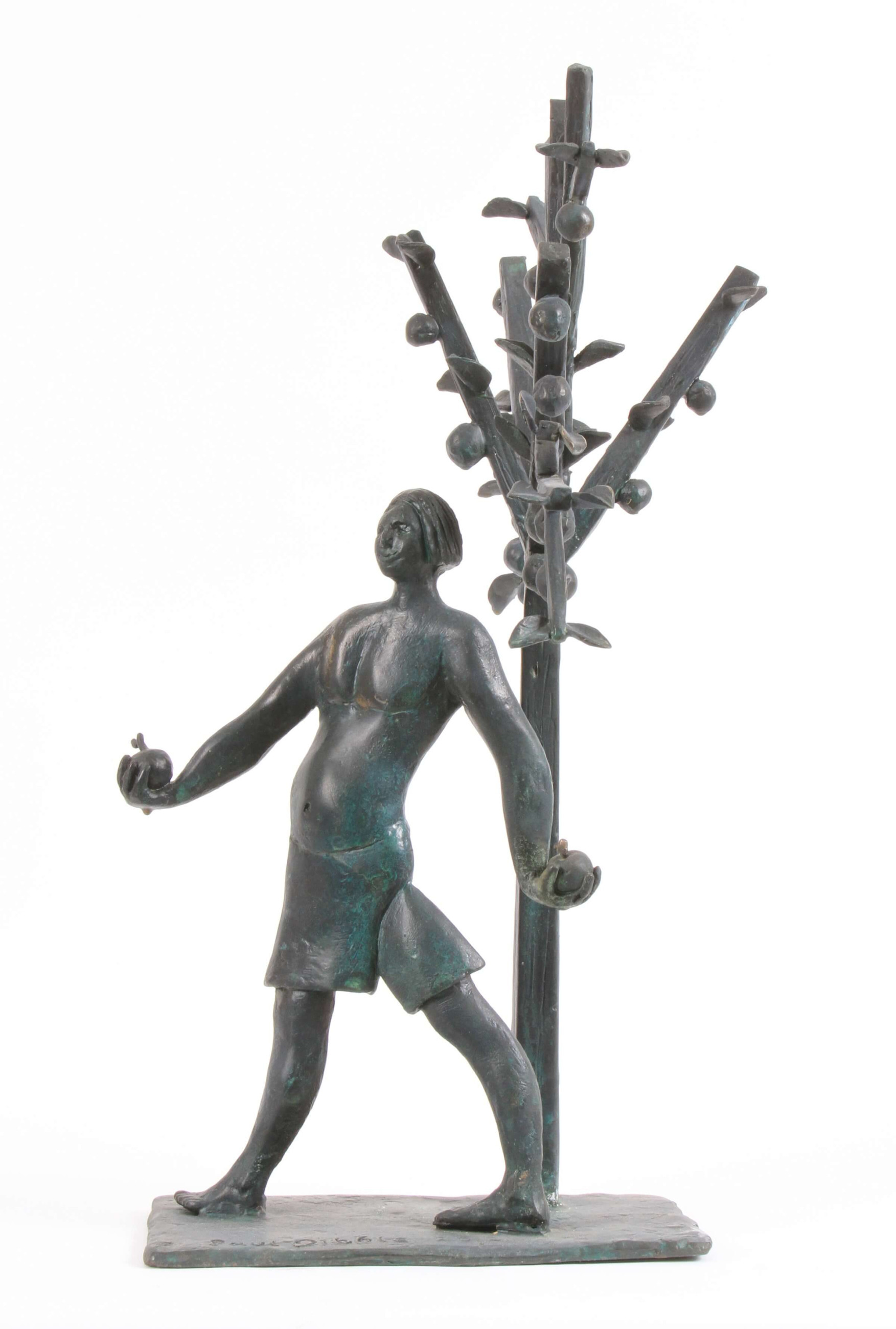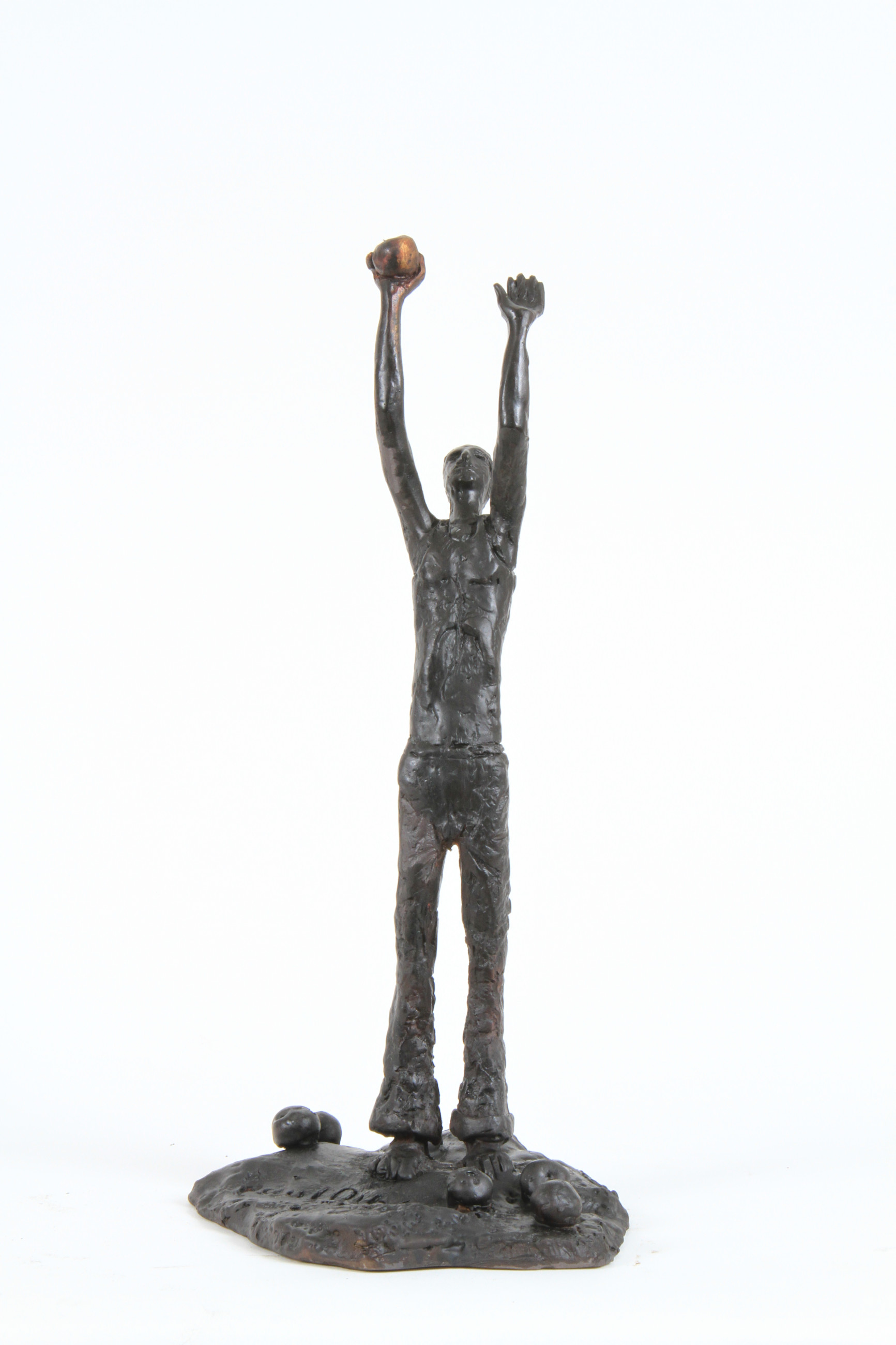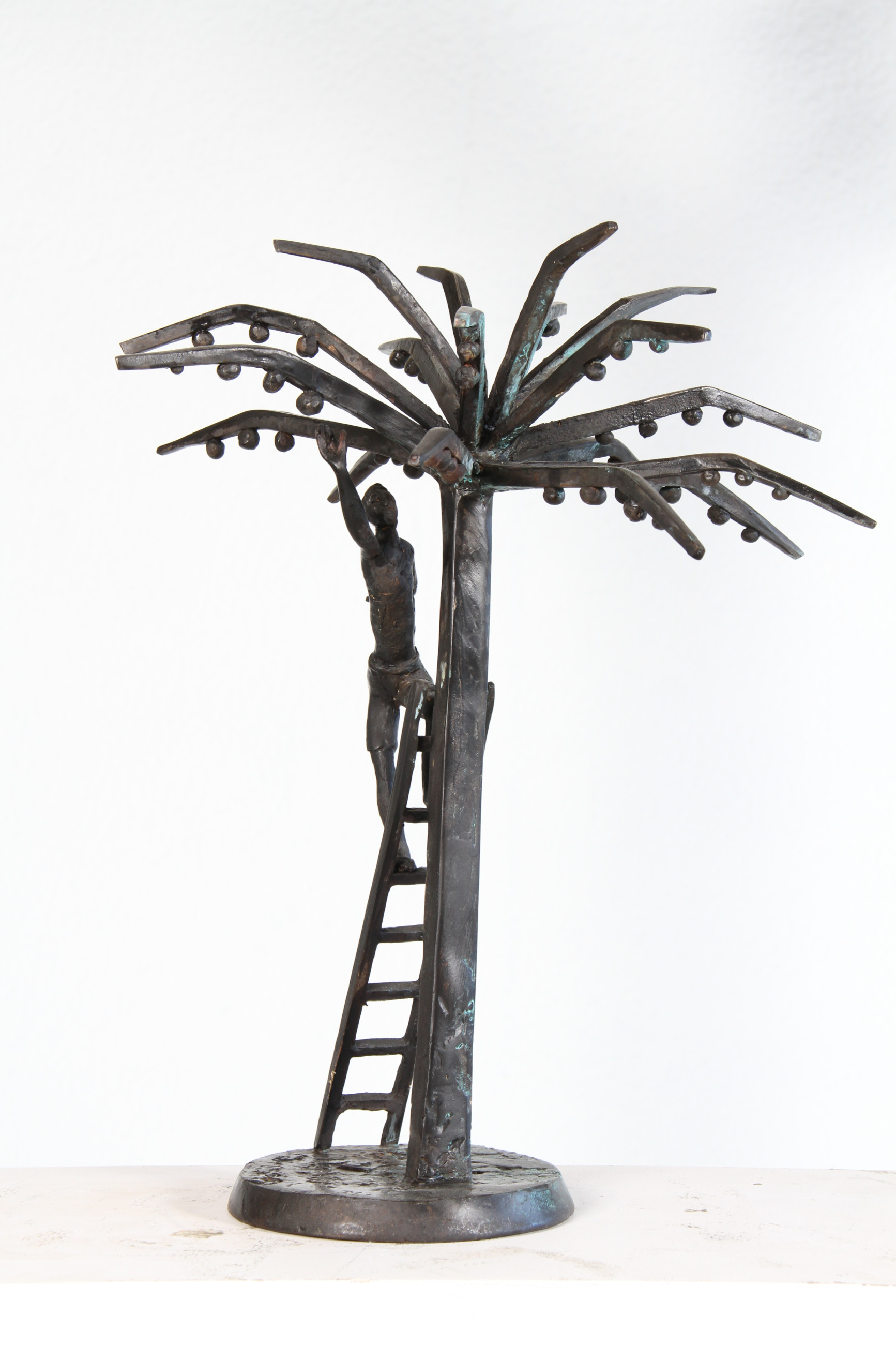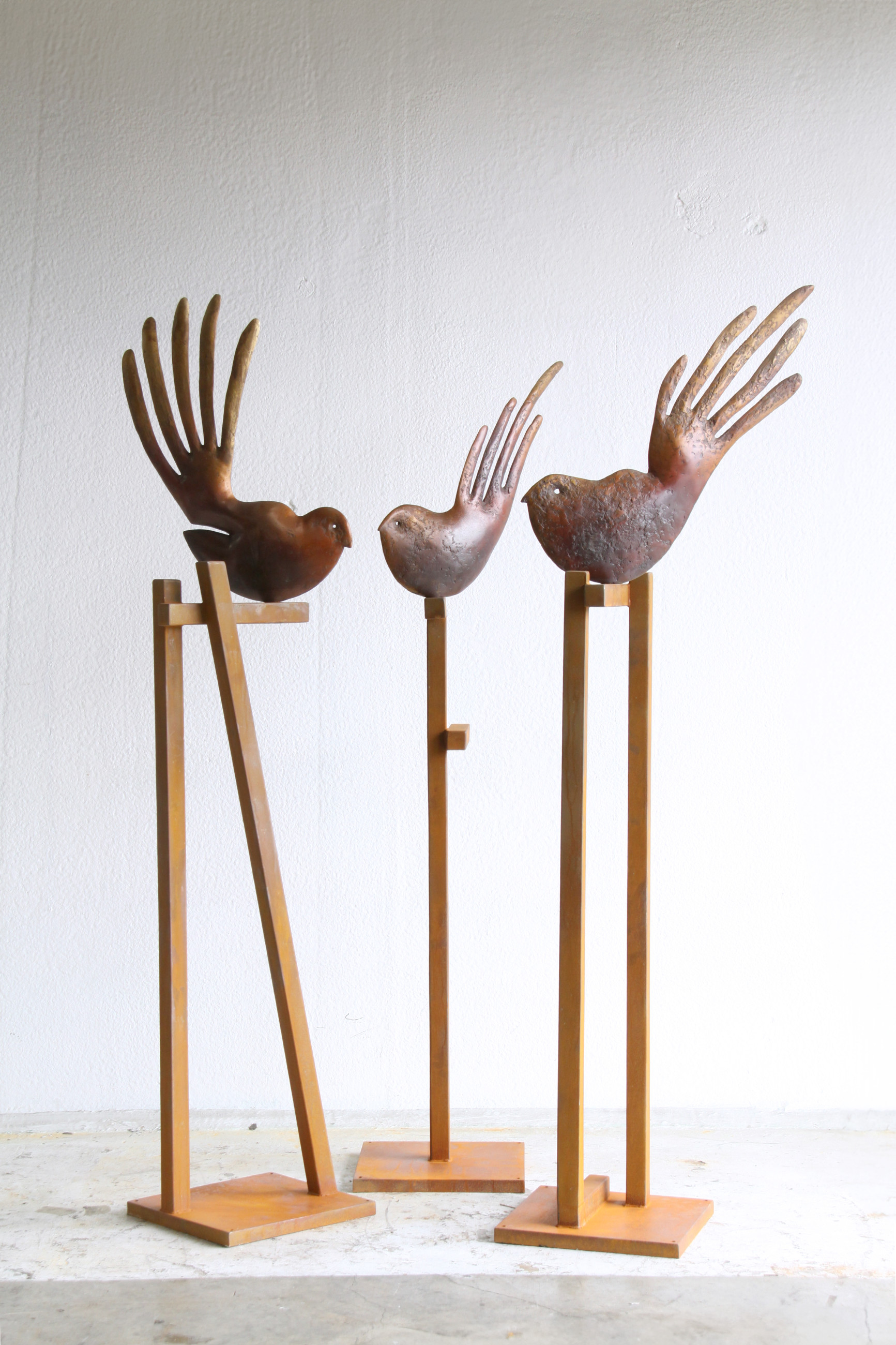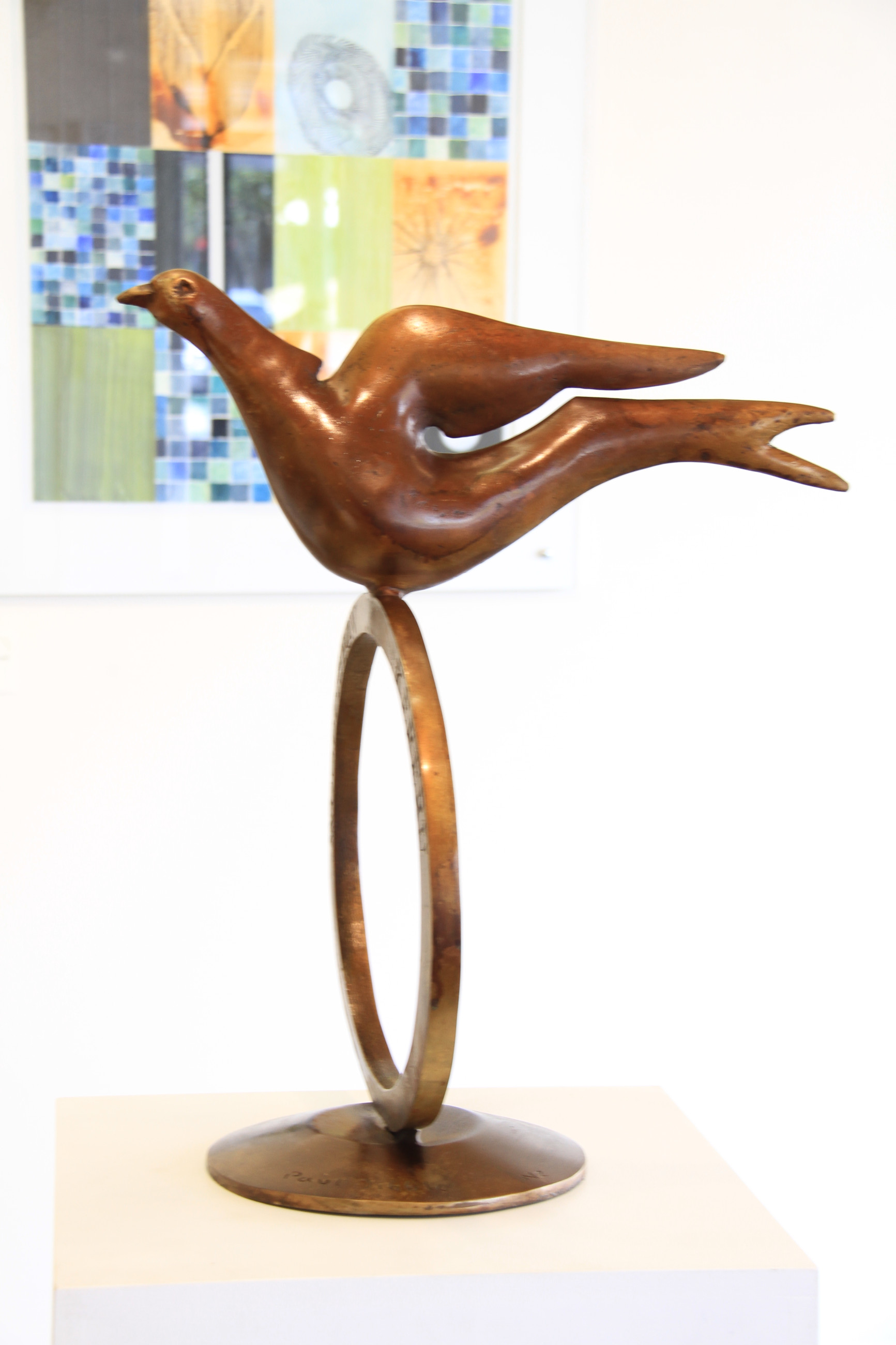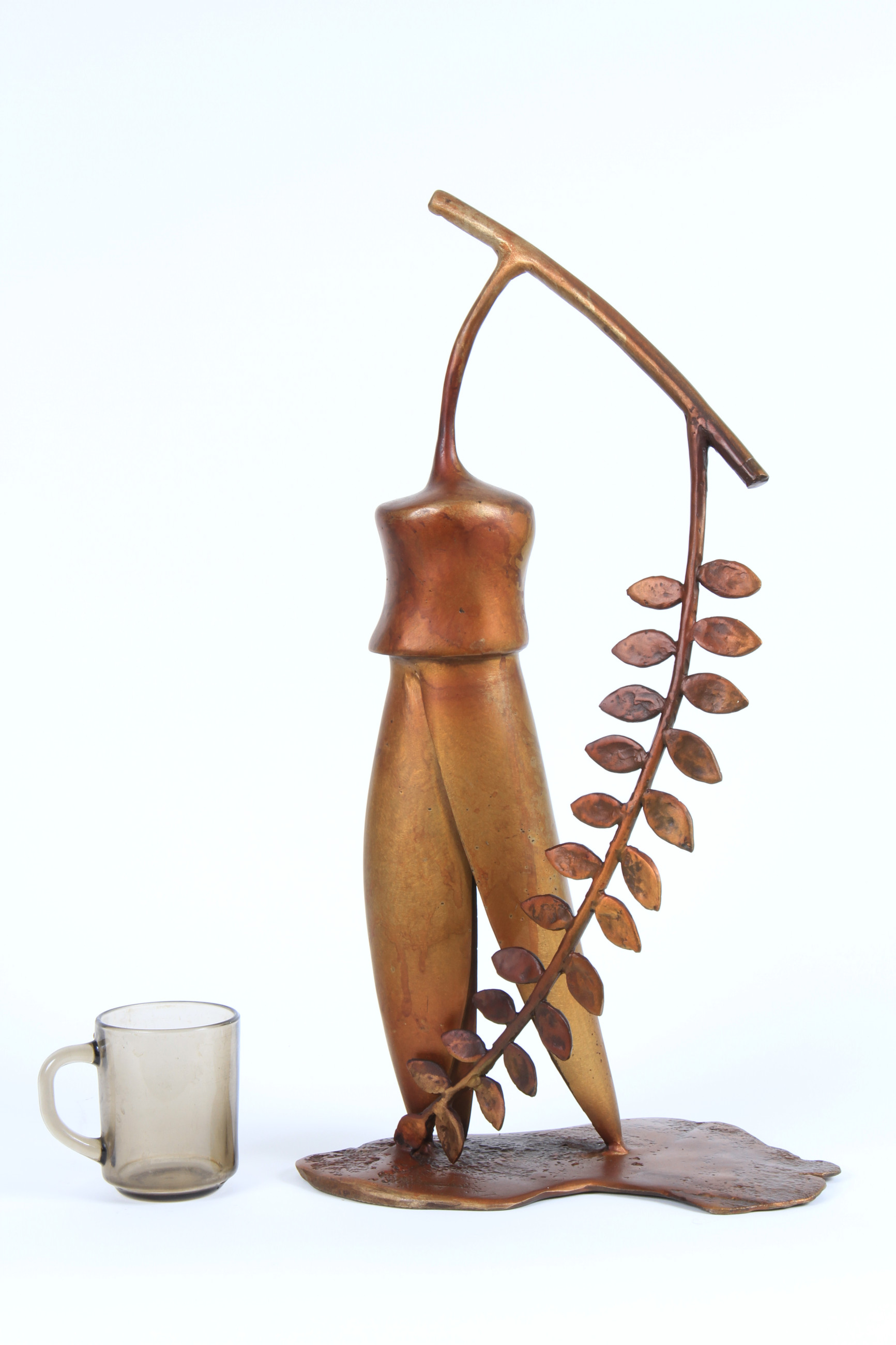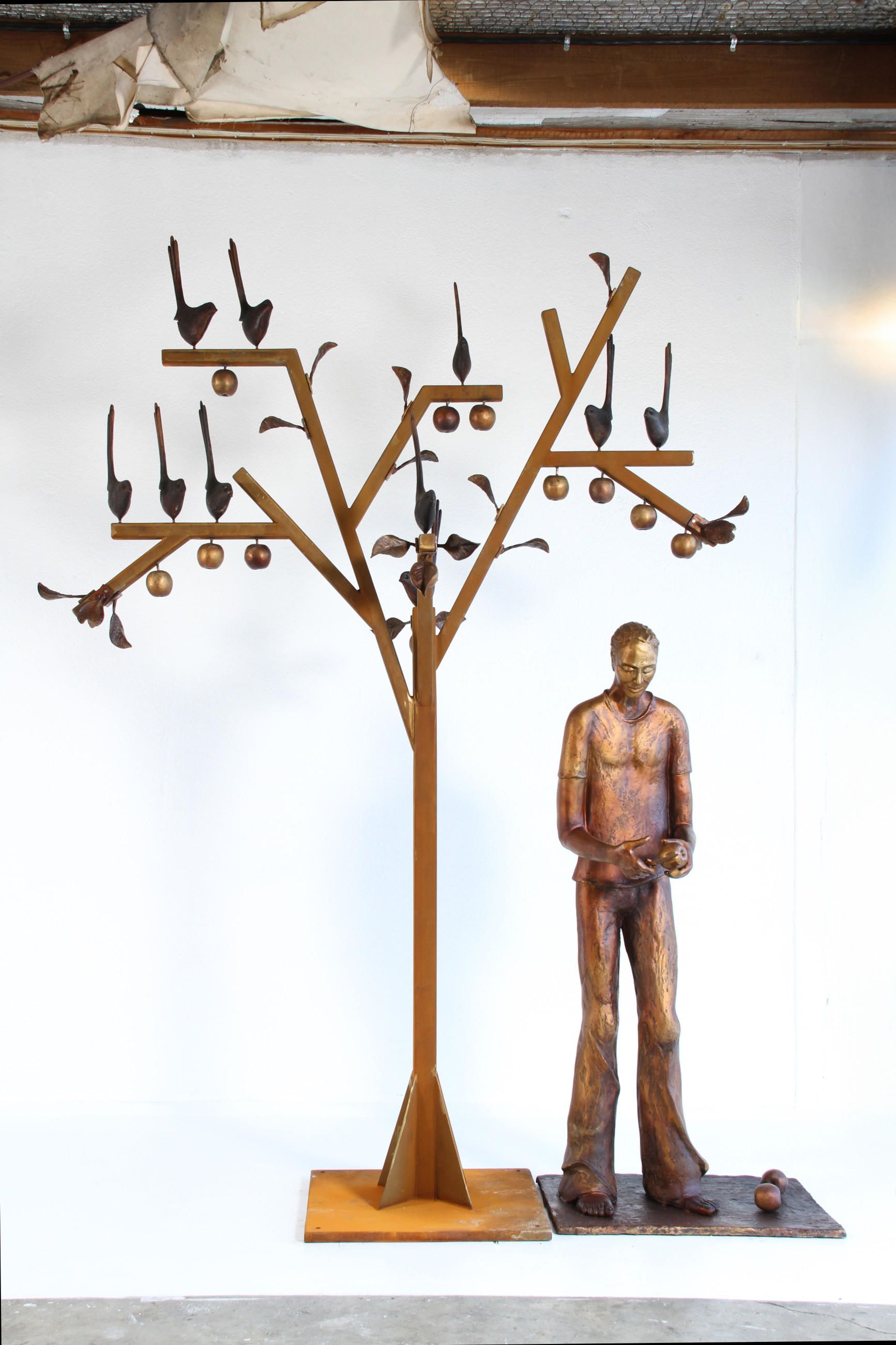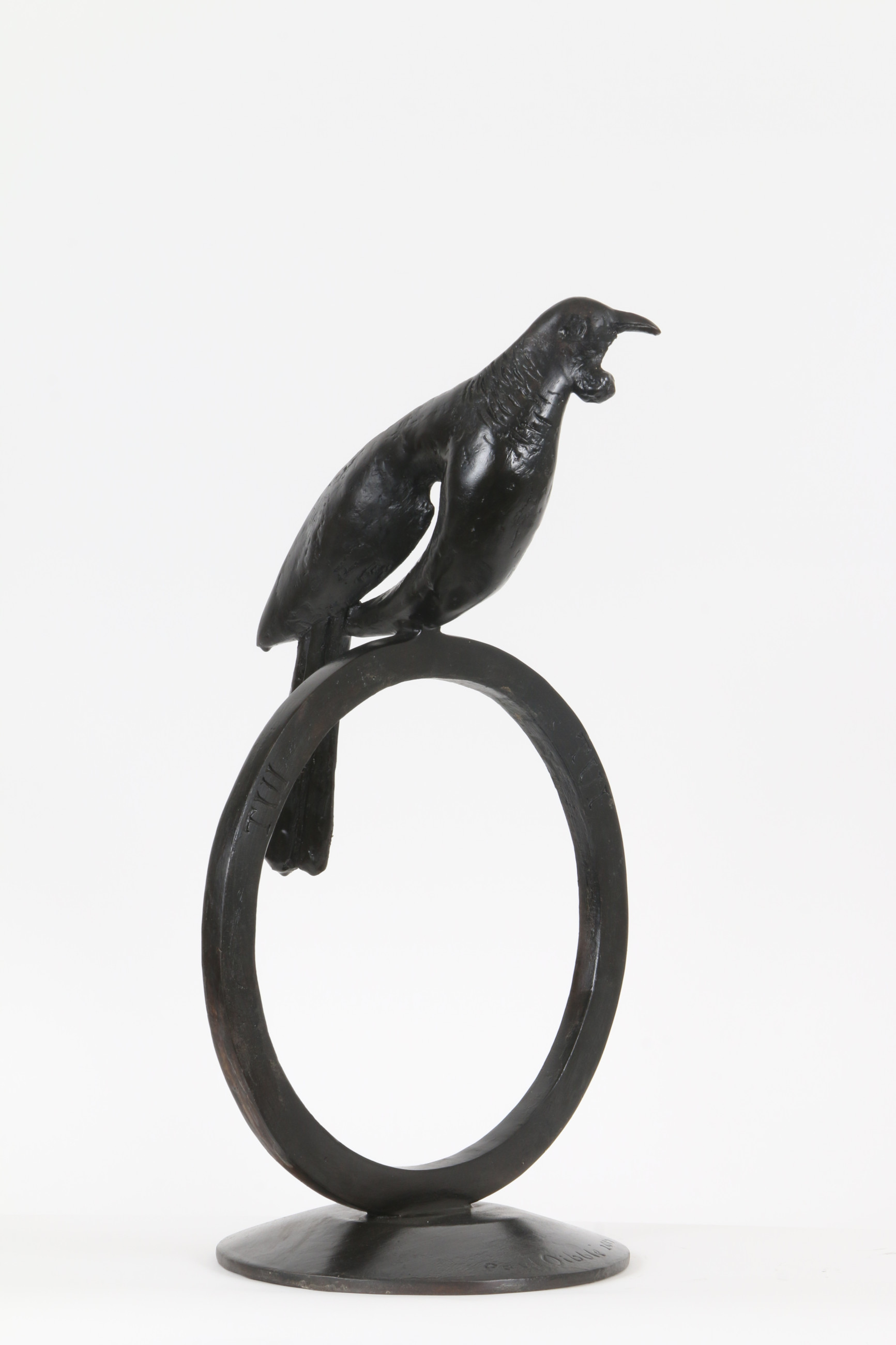August 31 - September 25, 2013 A Walk in the Park
August 31 - September 25, 2013 A Walk in the ParkSolo, Milford Galleries, Dunedin
Text
Paul Dibble is one of the most distinctive and considerable voices in NZ sculpture. “The human figure, objects drawn from contemporary life, the history of NZ and the Pacific form the subject of his work.” His works have clear narrative purposes and contain considerable aesthetic dialogues.
Viewed as an inter-related body of work A Walk in the Park is a monument to human endeavour and (questions) our stewardship of the environment.
Dibble uses space, line, scale and visual deception in characteristically intriguing ways. He contrasts the linear, fabricated, rectangular forms and constructionist dialogues of Corten steel with the expressive, organic, abstracted bird-forms and the human figure in bronze. He builds wonderful metaphors of place and event using the mythic language and symbolism of birds. He uses cultural motifs and parable – The Garden of Eden – but places this in the context of where we live now and what we do there.
Parallel Worlds (2013) is a masterful work with the key elements (a walking figure, a huia) flattened like silhouettes, pointedly facing in opposite directions and thus the (metaphorical) past and future. He assuredly plays about with pictorial and sculptural space, directly contrasting naturalistic and organic elements with fabricated forms.
Peeling the Apple (2012) is a tableaux hymn to the season of plenty. Dibble uses repetition and spatial division to ‘set the scene’. We ‘feel’ the grass, we ‘know’ the place and ‘the moment’ - we ‘watch’ as he peels the apple, implicitly understanding how fresh and juicy that first fateful bite will be.
The First Orchard (2012) reveals a contemporary Eve. Dibble’s modernisation of that tale is likewise continued and examined in A Neighbour’s Fruit is the Best Fruit (2012).
Tūī in the Kōwhai (Medium 2) (2010) is a trademark work in which volume is flattened and two-dimensional perspective is rendered in 3D. Fantail Construction (2010) similarly has shallow space but the nuances and individual characters of the fantails – their abstracted and exaggerated scale, the tail feather flourishes – animate the group and unite the three distinctly different objects and spaces into a unified whole with the flat chocolate colouring of the Corten steel providing a grounded stage for “the expressive round surfaces of the bronze birds.”
The internal journey and narratives of the exhibition is completed with three superb works – the iconic The Gold of the Kōwhai (2013), the wonderfully stylised Tūī (2013) and Flight of the Pigeon (2013).
